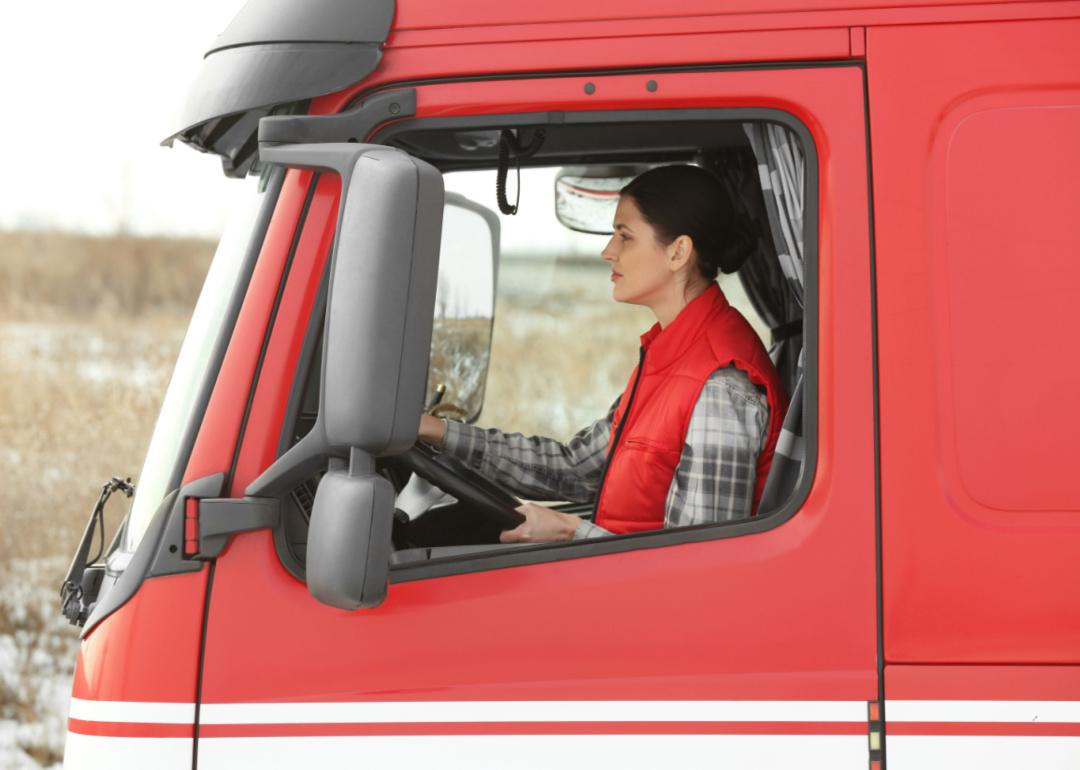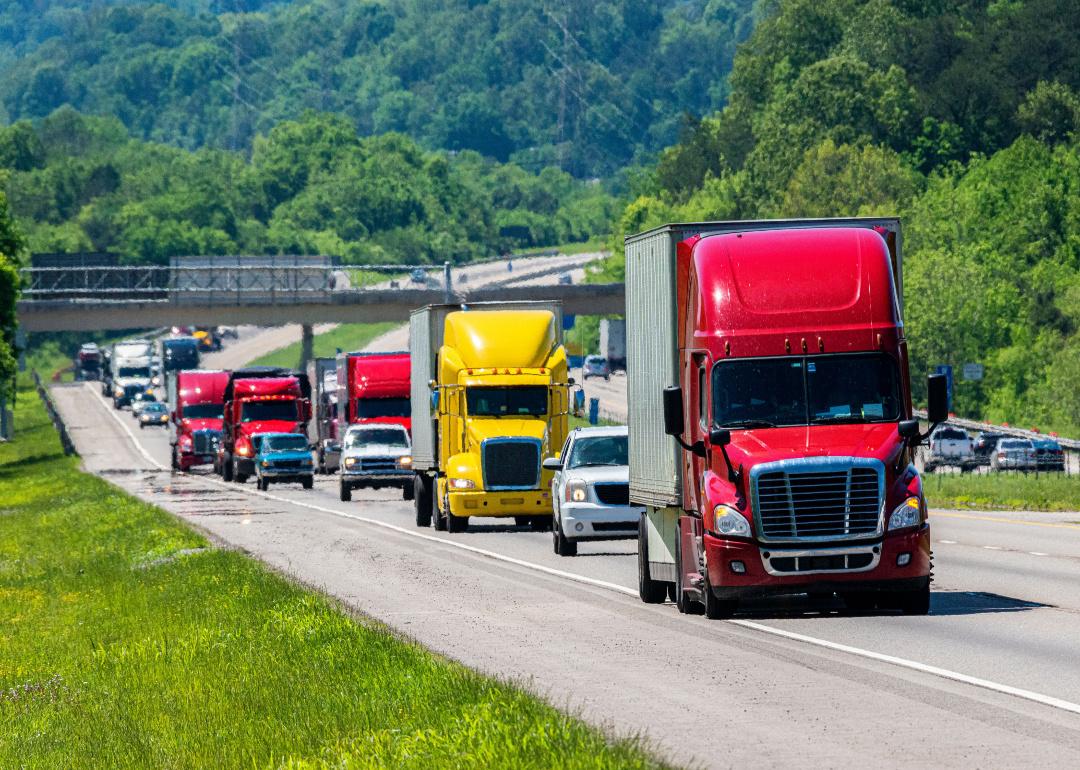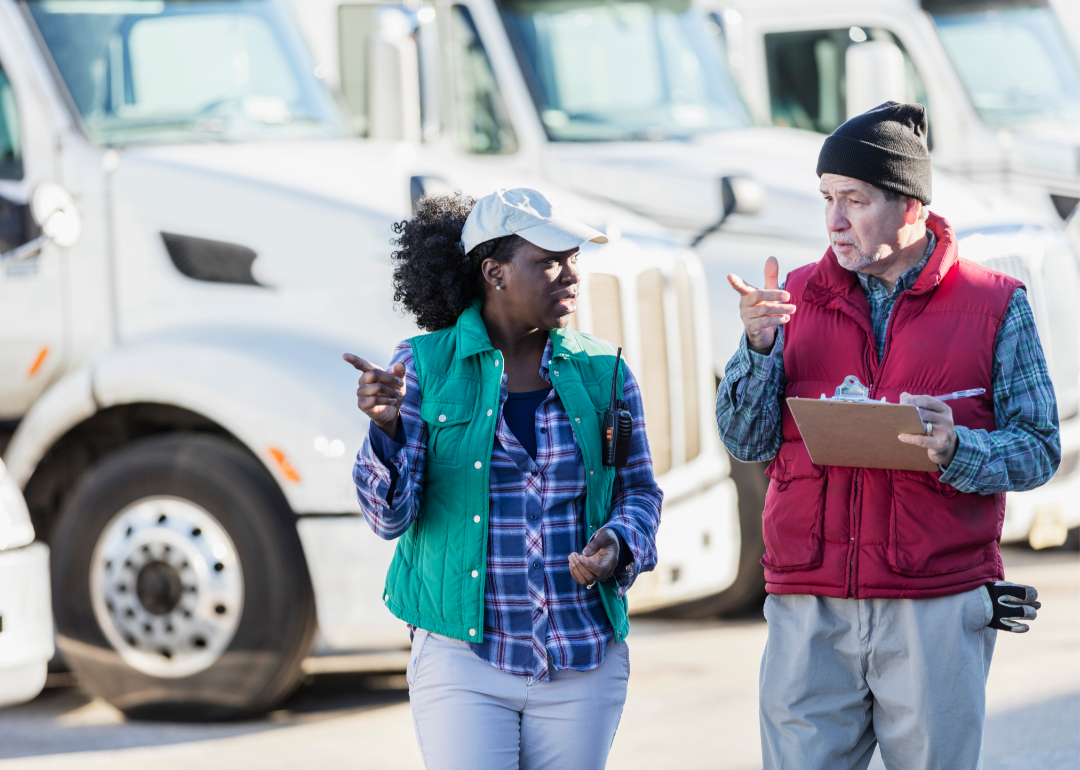How employment of women in the trucking industry has changed over the past 20 years

Africa Studio // Shutterstock
How employment of women in the trucking industry has changed over the past 20 years
Young woman truck driver sitting and driving large semi truck.
The image of the truck driver in American culture has, for decades, shifted between king-of-the-road heroism and uncouth villainy, taking on both the cowboy glory of film representations like “Smokey and the Bandit” and the coarse, predatory behavior in “Thelma & Louise.”
Between the often-conflicting—and one-dimensional—versions of truckers, one characteristic has remained relatively constant: They almost always depict a portrait of masculinity.
Since the industry’s beginnings in the early 20th century, both short-haul and over-the-road, or long-haul, trucking has been overwhelmingly dominated by men. Unlike many traditionally male-dominated industries, in which gender ratios have begun to balance out over time, trucking has, to a large extent, remained an industry made up mostly of men.
Truckinfo.net analyzed data from the Bureau of Labor Statistics to identify trends in the industry’s employment of women over the past two decades. In 2021, more than 9 in 10 truck drivers were men. What’s more, a 2020 Bureau of Labor Statistics analysis showed that 4% of all male full-time workers were truck drivers, making it the most common occupation by far for men in the United States.
On the flip side, the industry—particularly truck drivers—ranks among the lowest in the percentage of women employed. Compared to the national average industry gender makeup, which is 43.5% women workers, the percentage of women truck drivers was around 5.5% in 2019, according to Department of Labor data, which was limited to binary-based gender identities.
Still, women’s involvement in the industry has slowly progressed, doubling over the past two decades. In 2000, women comprised 3.65% of driver/sales workers and truck drivers. By 2021, they increased their share to 6.75% of industry workers, including driver and sales workers, heavy and tractor-trailer truck drivers, and light truck drivers.
Women have also made strides in other trucking-related jobs, including occupying leadership roles at trucking companies, serving on the board of directors of organizations, and as human resources professionals, according to the 2022 Women in Trucking Index. There are many more women employed in these roles than as truck drivers and technicians, which account for two of the smallest employers of women in the industry.
![]()

Carolyn Franks ” Shutterstock
Bringing more women into trucking is, on the surface at least, a top priority
A red semi leading the traffic on an interstate highway.
Recent campaigns and changes by the trucking industry, the government, and advocacy groups have focused on bringing more women into the profession—particularly as reports of truck driver shortages persist.
The American Trucking Associations, the industry’s largest trade organization, launched its Women in Motion initiative, which aims to move women into the trucking industry and break down some barriers that keep them from succeeding. The Biden-Harris administration has also taken an interest in women in trucking. In August 2022, the Department of Transportation’s Federal Motor Carrier Safety Administration announced the creation of the Women in Trucking Advisory Board, meant to bring more women into the industry and to support those already in it.
Advocacy groups like REAL Women in Trucking and Women in Trucking have pushed for change in the industry for many years. Both organizations have committed to creating a safer, more equitable environment for women in the trucking business. They have shed light on how the industry—historically and currently—has been inhospitable to women and members of the LGBTQ+ community. Facebook groups and other online communities—some thousands of members strong—have also cropped up, giving women truckers a platform to air grievances and find resources.
Some of the changes in the industry have less to do with making the culture of trucking more welcoming towards women and more with the literal nuts and bolts of trucks themselves. Like other vehicles, which are safety tested using crash test dummies with tall, broad, and muscular physiques traditionally associated with men, trucks have been mostly designed to be operated by larger, heavier bodies, making them more difficult for smaller bodies to operate.
Truck design has begun to shift in recent years, however. In 2014, truck company Ryder teamed up with Women in Trucking to improve its truck designs and make them more operational for all body types. This included adjustable pedals, modified stair and handrail placement, and adjustable seat belt height.
In 2019, Volvo rolled out new truck cab designs that also offer more flexibility and comfort to a range of body types. These designs include more responsive steering, less force required to operate, adjustable seating, and controls that are easier to access.

Canva
Systemic obstacles still prevent many women from succeeding in trucking
A woman and a man truck drivers in discussion in front a of a fleet of semi-trucks.
Large-scale recruitment efforts and better, more inclusive truck designs are one thing. Retaining drivers just entering the industry by ensuring their safety and making trucking more inclusive are another.
According to advocacy organizations and the government, the trucking industry has a retention problem thanks to inconsistent wages, unsafe working conditions, and long, grueling hours. Some trucking companies experience turnover rates of above 90%. However, a caveat of that figure is the number of new truckers who job hop from company to company, chasing better pay, increased benefits, or more acceptable working hours.
While overall retention rates are low, women and LGBTQ+ people in trucking face unique challenges. In recent years, claims of widespread sexual harassment and assault reported by women in the trucking industry have come to light, prompting investigations by news outlets and the Department of Labor. Women in the early stages of driving training are particularly vulnerable, as they may be paired with male trainers on days or even weeks-long trips.
Other obstacles make it difficult for women to stay in trucking. The lifestyle necessitated by long-haul trucking—long stretches of time spent on the road, away from home—coupled with frequent lack of child care, family leave, and other benefits disproportionately impact women drivers, who often bear the brunt of caretaking responsibilities for children and elders.
On top of these roadblocks, women still make less than men in trucking. According to the BLS, male truck drivers make 1.3 times what women drivers make. On average, male drivers earn a median of $933 per week, while women drivers earn $732.
Despite the challenges, increasing numbers of women and LGBTQ+ people are finding community and independence as truck drivers. For many, trucking offers freedom, time for self-reflection, and even space for self-discovery.
This story originally appeared on Truckinfo.net and was produced and
distributed in partnership with Stacker Studio.